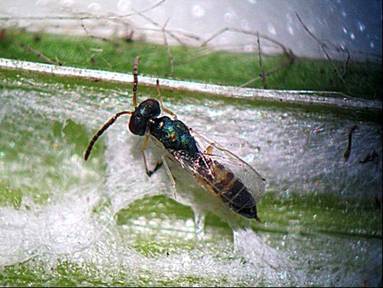An estimated 4,000 ha of soybeans near Casino in Northern NSW have been affected to varying degrees by soybean stem fly (Melanagromyza sojae) , a pest rarely seen in damaging numbers in Australia. Damage in many Casino crops is confounded by the presence of charcoal rot, a disease which blocks the plant’s vascular (xylem and phloem) tissue and causes similar damage – leaf wilting and plant death.
Stem fly damage in soybeans near Casino, NSW
Adult flies are shiny black and about 2mm long and look very similar to the bean fly (Ophiomyia phaseoli) which is a major pest of navy bean seedlings. The damaging stage is the white larvae (maggot) which feeds inside the stem. Soybean stem fly larvae can be distinguished from other bean fly species by the “blunt, somewhat atrophied (shrunken) central horn” in each posterior spiracle. The pale brown pupae are cylindrical in shape with rounded ends.
Stemfly larvae burrows into soybean stems
Adult stem fly
The soybean stem fly inserts eggs on the underside of young leaves. Ovipositing sites present as pale pinprick spots when infested leaves are held up to the light. Upon emergence the larva mines through the leaf tissue towards the mid vein. From here it works its way down the leaf petiole into the stem where it feeds on the pith. Before pupation, which takes place inside the stem, the larva makes an exit hole for the emergence of the adult, through the stem’s xylem and phloem tissue. It is this damage to plants vascular tissue that affects the plant’s growth and reduces yield. The larval stage takes 8-11 days and the pupal stage lasts 6-12 days (depending on temperature).
Several generations can develop in the soybean crop and it is possible that successive generations in the infested crops have built to damaging levels.
Stemfly pupae
Infected stems are often red inside (sometimes pale) and a distinct zig-zag tunnel may be observed – with maggots or pupae inside. Apart from the exit holes, the soybean plants will initially appear healthy on the outside. Large infestations (3 or more maggots per plant) may cause wilting and may even cause plant death, especially in younger plants particularly if damage occurs in the plant’s hypocotyl (basal stem) region. In the Casino outbreak, damage symptoms in earlier-planted crops were manifested rapidly throughout infested crops in as little as 4-7 days. In many later-planted crops, significant stem fly activity has been observed (in dissected plants), but damage symptoms have yet to be manifested.
Dissected soybean stem reveals feeding tunnels leading to exit hole. These are not obvious until stems are dissected
Overseas literature suggests 20-30% yield reductions when crops are infested in the early vegetative stage. Damage causes reduced pod and seed set. If leaves wilt or die during podfill, as in the current outbreak, it is likely that significant yield losses will occur due to reduced seed size. However, many of the Casino crops are also affected by charcoal rot, a disease which blocks the plant’s vascular (xylem and phloem) tissue and this causes similar damage to stem fly with leaf wilting, plant death and reduced seed size.
Note – do not confuse stem fly with the larvae of etiella (lucerne seed webmoth) (Etiella behrii) and lucerne crown borer (Zygrita diva) which also feed inside the stems and make reddish feeding tunnels. These larvae are much bigger, have well defined head capsules, and in the case of larger etiella larvae, are green with pink stripes. Lucerne crown borer is a common pest of soybeans. Plants infested by crown borer only die when fully-developed crown borer larvae ‘ringbark’ stems internally prior to pupation.
Typical charcoal rot lesion on soybean
Management
No chemicals are registered for the control of soybean stem fly in Australia. However a emergency use permit was recently secured for dimethoate @ 800mL/ha (permit number 14121, valid until 31 May 2013). However by the time significant leaf damage symptoms (wilting/death) are observed, it may be too late to prevent yield loss. As well, prophylactic spraying of dimethoate at the 800mL/ha rate will flare mites, silverleaf whitefly and helicoverpa. More sustainable management options will be explored for future seasons.
Sticky traps, such as this one used in nothern NSW, can indicate the presence of adult stem flies
While stem fly larvae are seemingly well protected from natural enemies as they feed inside stems, significant parasitism by tiny wasps has been recorded in Africa and Asia. Soybean stem fly parasitism has also been observed in infested crops at Casino. The identity of these wasps has yet to be determined but it is possible they are keeping stem fly in check in most years.
Soybean stem fly wasp parasite (2.5 mm).
Please report any suspected soybean stem fly infestations to:
Article by Hugh Brier and Kate Charleston
Images by L. Gaynor, Natalie Moore, Joe Wessels and Hugh Brier
Post script comment

.JPG)
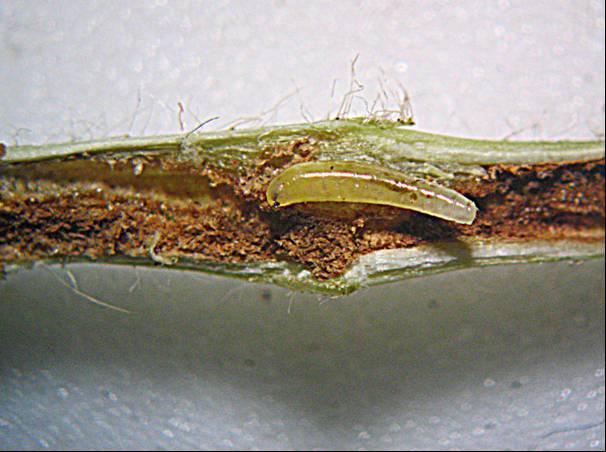
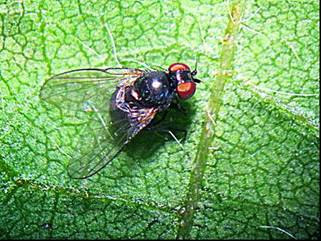
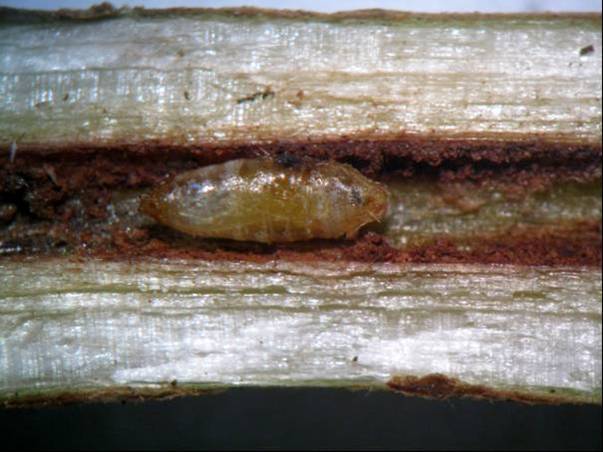
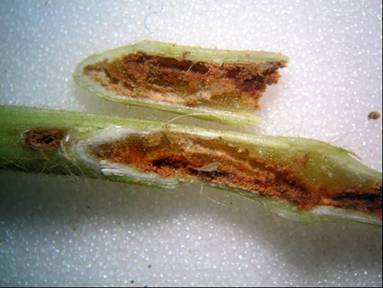
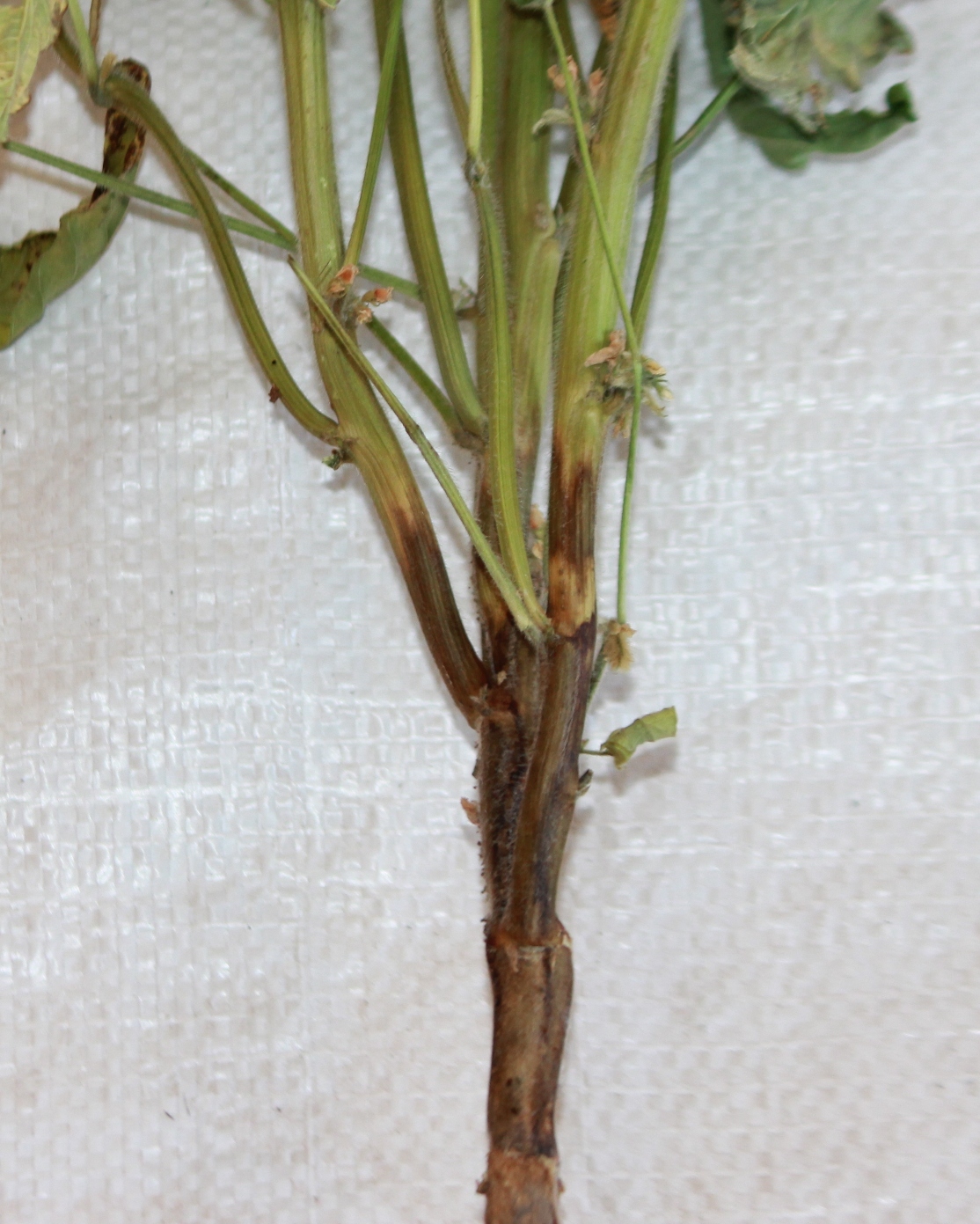
(1).jpg)
